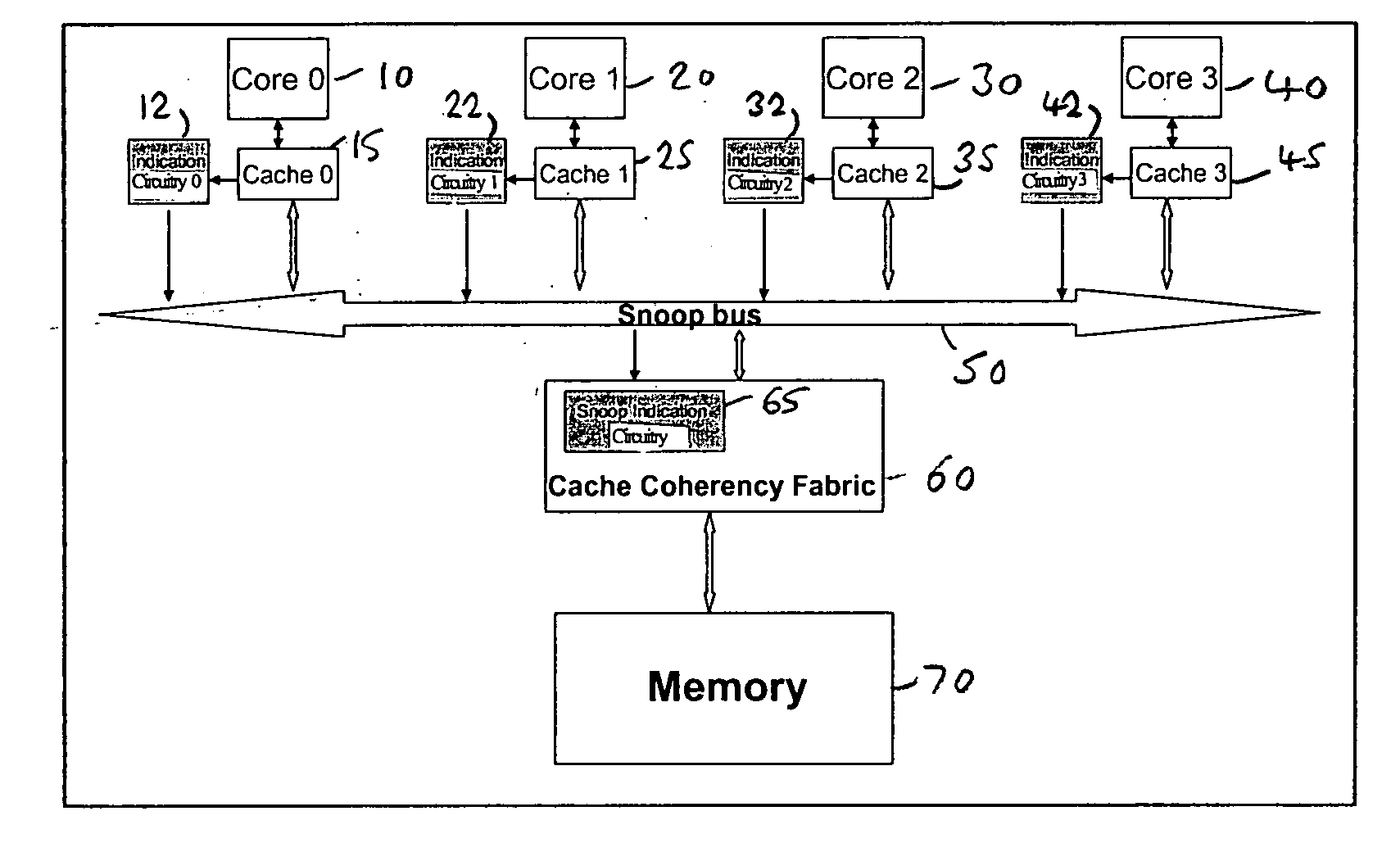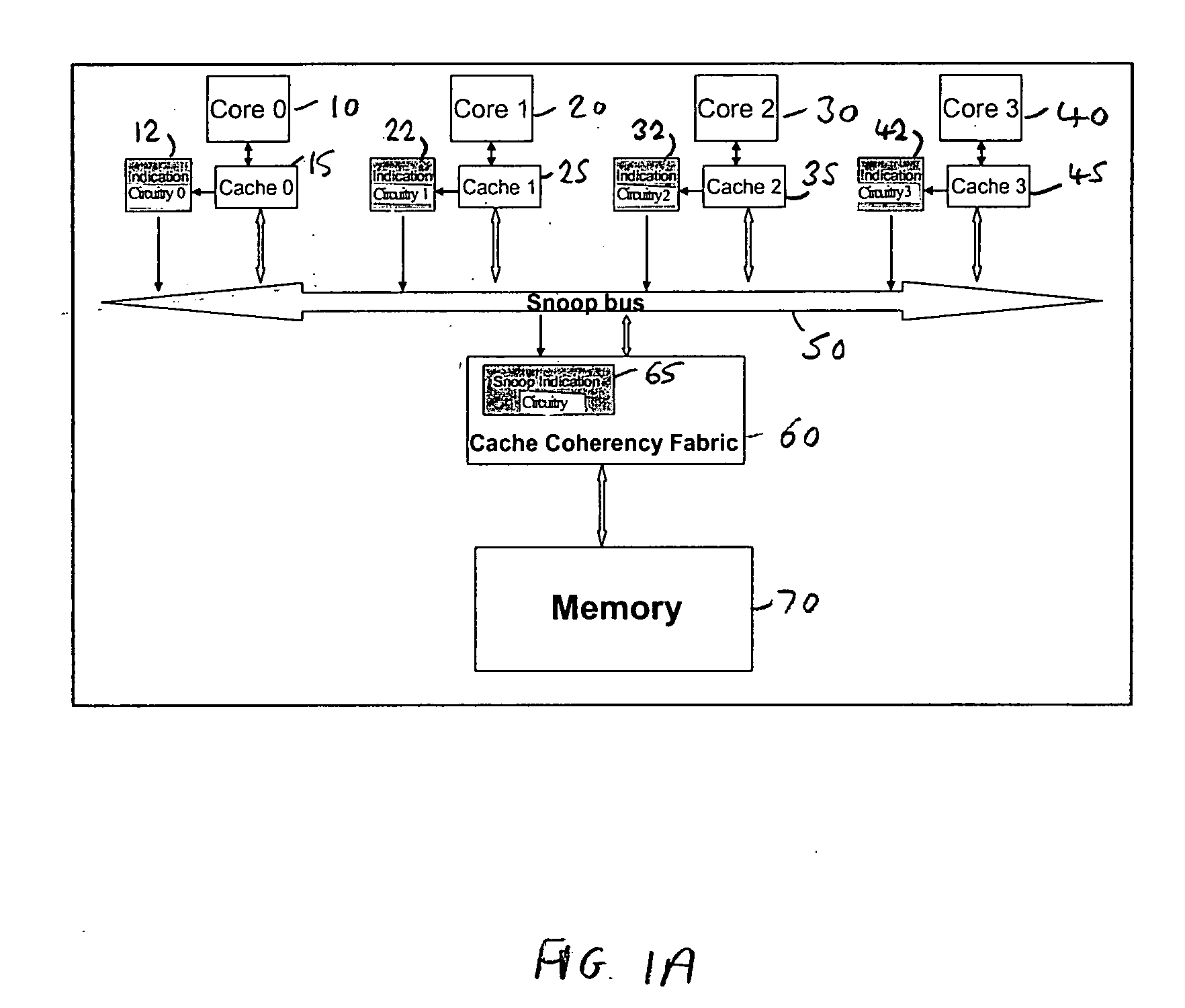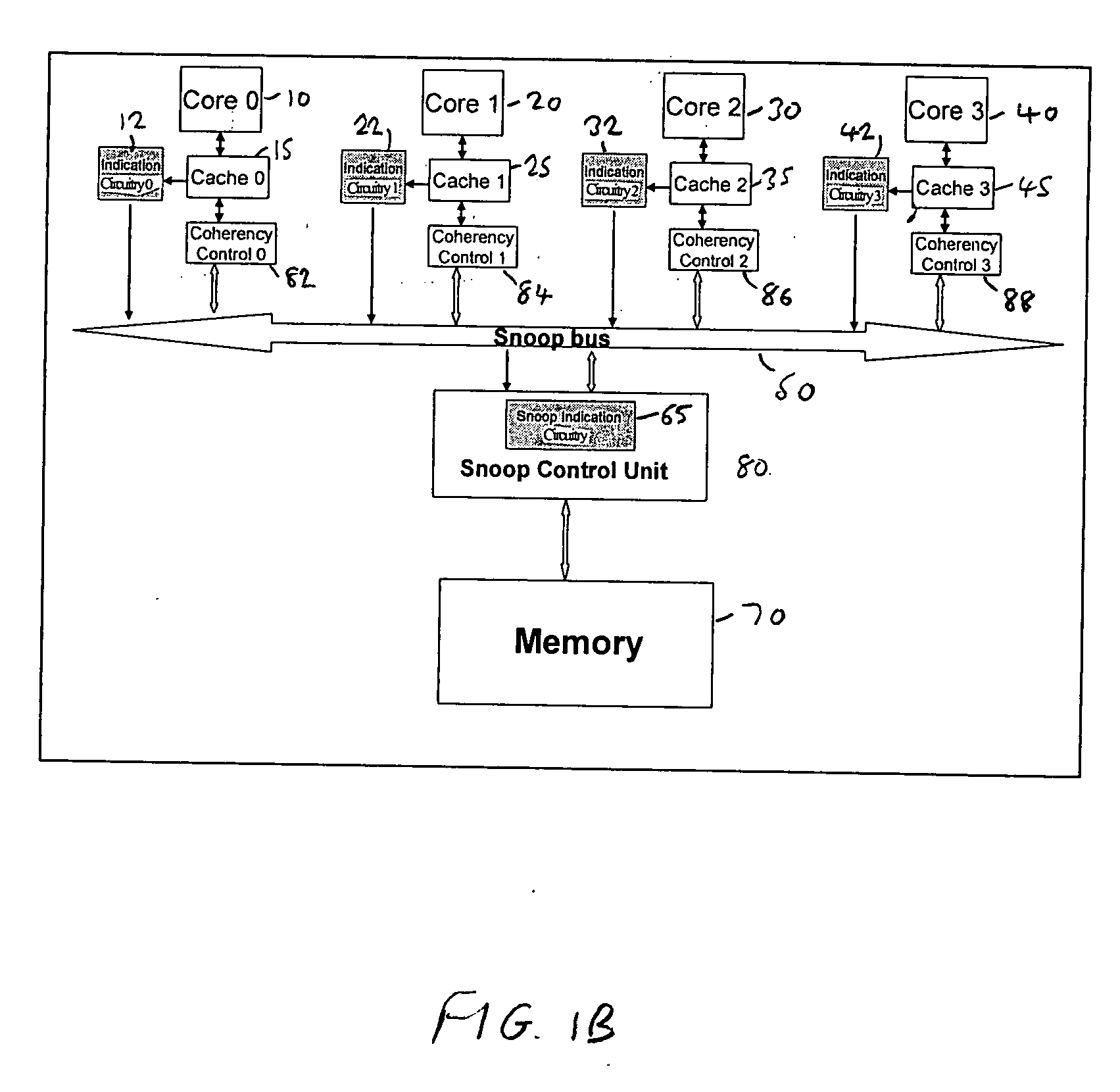Managing cache coherency in a data processing apparatus
- Summary
- Abstract
- Description
- Claims
- Application Information
AI Technical Summary
Benefits of technology
Problems solved by technology
Method used
Image
Examples
Embodiment Construction
[0068]FIG. 1A is a block diagram of a data processing apparatus in accordance with one embodiment of the present invention. The data processing apparatus comprises a plurality of processor cores 10, 20, 30, 40, each provided with its own local cache circuitry 15, 25, 35, 45, respectively. Each cache circuitry may comprise a single cache or may comprise multiple caches. For example the cache circuitry 15 provided in association with core 10 may comprise a level one cache and optionally may also comprise a level two cache. Often, a level one cache will be split to provide a separate level one instruction cache and a separate level one data cache. For a level two cache, it is more often the case that a unified cache structure is provided for storing both instructions and data. For the purposes of the present application, the term “data” will be used to refer generally to both instructions to be executed by a core and data manipulated by the core when executing those instructions.
[0069]...
PUM
 Login to View More
Login to View More Abstract
Description
Claims
Application Information
 Login to View More
Login to View More - R&D
- Intellectual Property
- Life Sciences
- Materials
- Tech Scout
- Unparalleled Data Quality
- Higher Quality Content
- 60% Fewer Hallucinations
Browse by: Latest US Patents, China's latest patents, Technical Efficacy Thesaurus, Application Domain, Technology Topic, Popular Technical Reports.
© 2025 PatSnap. All rights reserved.Legal|Privacy policy|Modern Slavery Act Transparency Statement|Sitemap|About US| Contact US: help@patsnap.com



